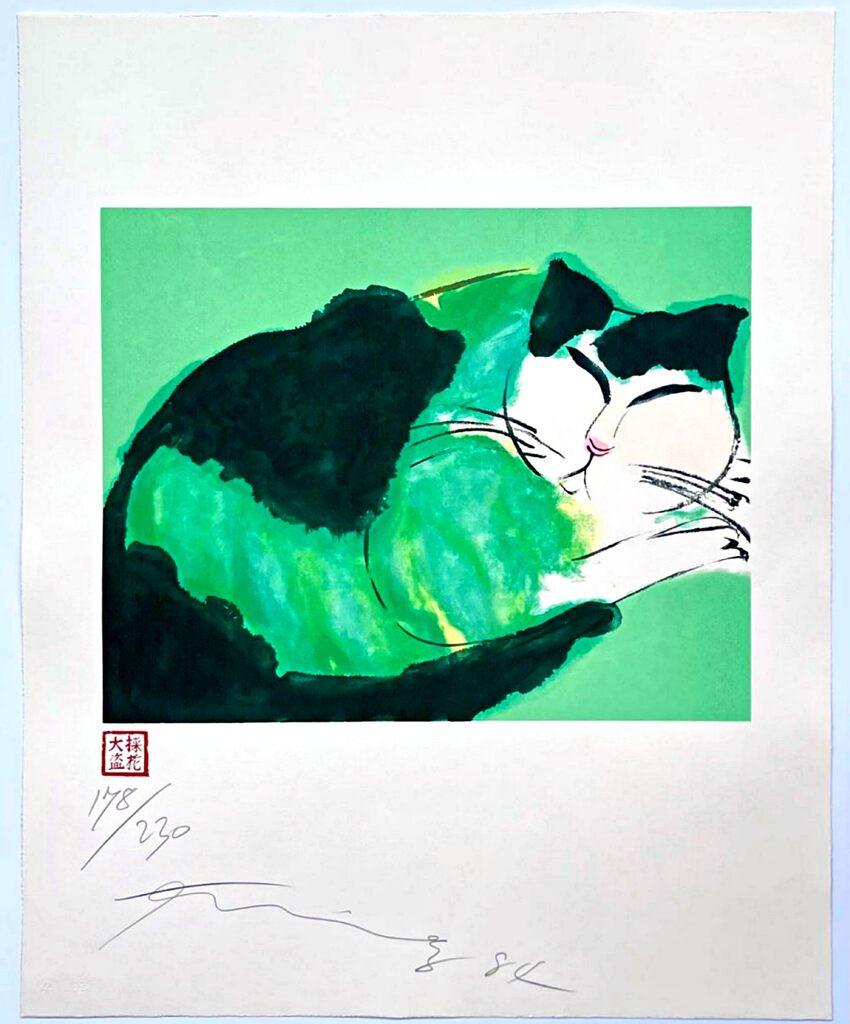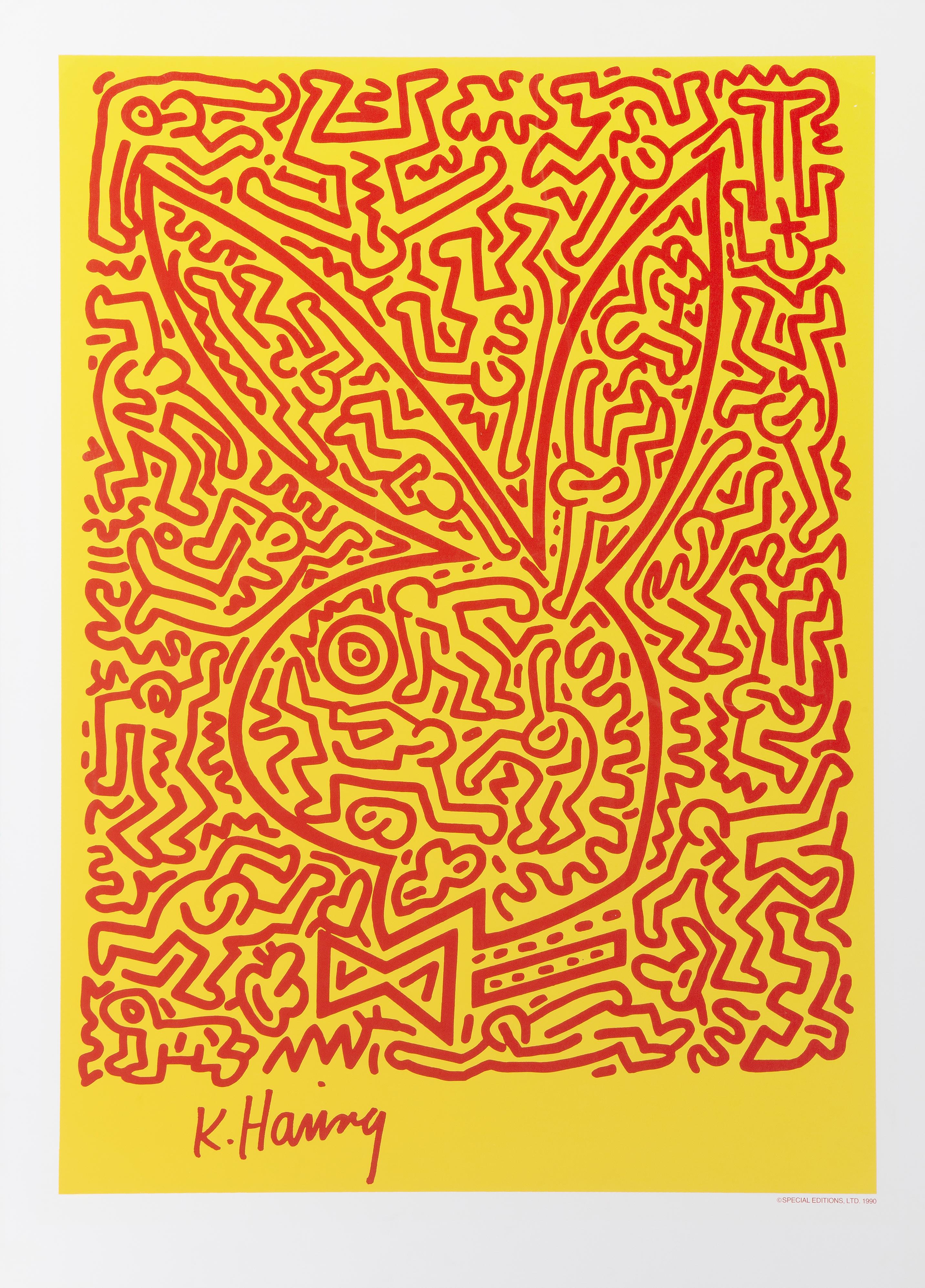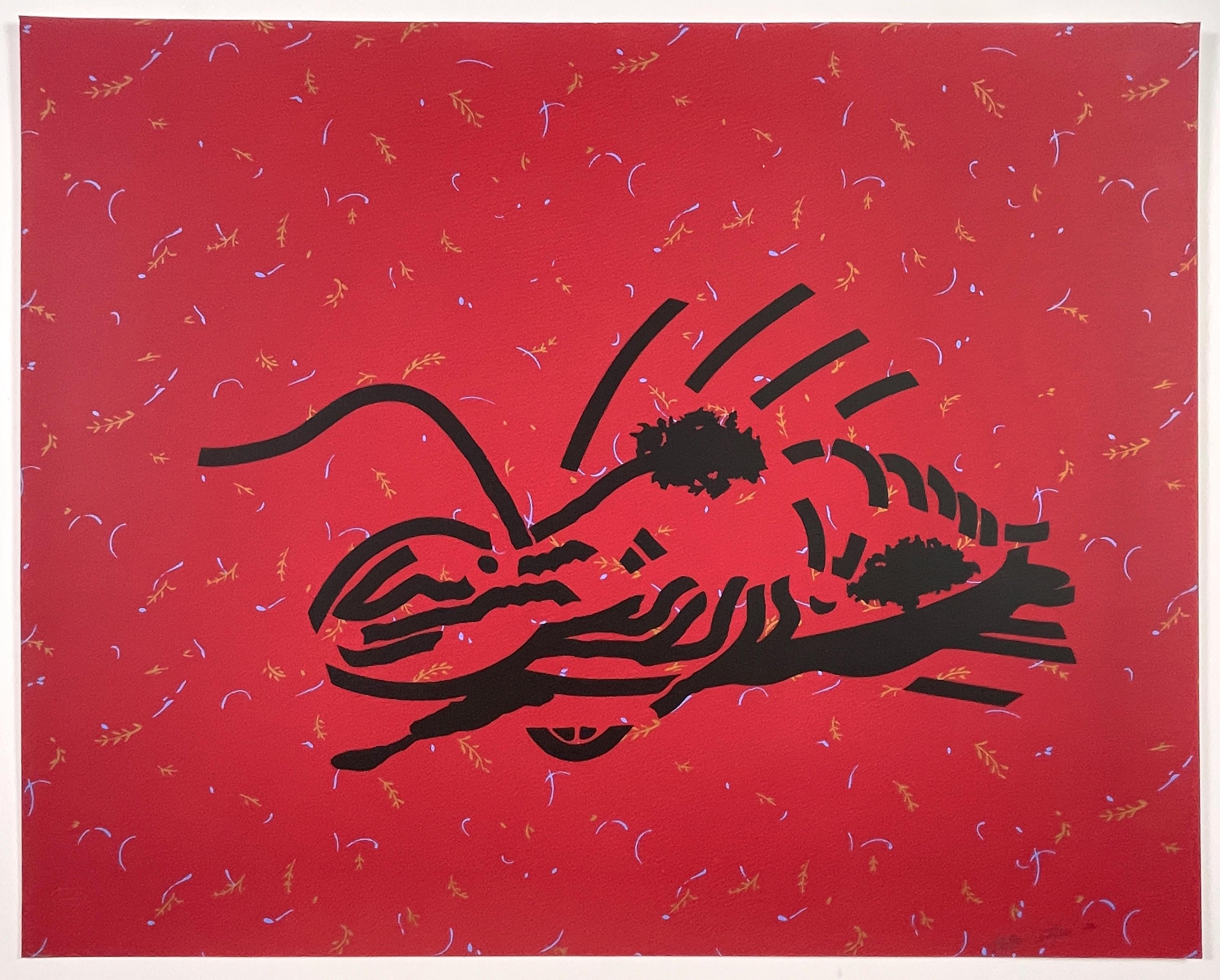Ed RuschaDocumenta 5 (Engberg 66) early 1970s screenprint signed/N for Kassel art show1972
1972
About the Item
Ed Ruscha
Indisputably one of the most iconic American artists of the 20th century, Ed Ruscha has built a formidable body of work by staking a claim on the deceptively simple intersection of text and image, superimposing elliptical phrases (or, often, single words) over West Coast landscapes to create prints and paintings that can be read instantaneously yet evade easy understanding.
Alongside artists like Robert Irwin and Billy Al Bengston, Ruscha was a pioneer of the 1960s Los Angeles art scene as part of the famed Ferus Gallery. His embrace of Hollywood vernacular and the open Western road have tied him as closely to the identity of L.A. art as Jackson Pollock is to that of New York.
Coming to California in 1956 at the age of 18, Ruscha intended to become a commercial painter but found himself drawn to fine art, over time being shaped by three galvanizing influences: Marcel Duchamp, Pop art and the movies.
Meeting Duchamp when the Pasadena Art Museum (now the Norton Simon Museum) hosted the French Conceptual artist's first U.S. show, Ruscha was especially affected by his use of "readymade" objects and imagery, rendered unfamiliar through unexpected titles or text. Andy Warhol's Campbell's Soup can paintings, meanwhile, were shown for the first time at the Ferus Gallery in 1962, opening up new vistas for Ruscha. Movies, then, provided another inspiration through their use of title cards, placing graphic text over filmic shots — The End, for instance — for maximum impact.
Ruscha began his famous series of word paintings in the 1960s, depicting various views of the Hollywood sign and the logos of studios like 20th Century Fox, but also roadside views like the Standard Oil stations dotting L.A.'s freeways. Over time these became more abstracted, pinning ambiguous, free-floating phrases (Wall Rockets is a famous example) to natural vistas, scenes of highways, or monochrome backgrounds. Beginning in about 1980, the artist began using a sharp font he designed himself, called Boy Scout Utility Modern.
A master printmaker who also works across the mediums of books, drawing, photography and even film — in 2009 he starred in a movie directed by the artist Doug Aitken — Ruscha has been an influence on a staggering array of artists, including Stephen Shore, Christopher Wool and Anselm Kiefer.
Ruscha's work has been featured in dozens of exhibitions around the world, including "Ed Ruscha: 50 Years of Painting" at London's Hayward Gallery (2009), "Ed Ruscha: Made in Los Angeles" at Madrid's Reina Sofia in 2002, a 2000 retrospective at the Hirshhorn Museum and Sculpture Garden, a survey of his works-on-paper at the J. Paul Getty Museum in 1998, and a 1982 retrospective that traveled to the Whitney Museum. In 2005 he represented the United States at the 51st Venice Biennale, and in 2009 he received a National Arts Award.
Find a collection of original Ed Ruscha lithographs and other art for sale on 1stDibs.
- ShippingRetrieving quote...Ships From: New York, NY
- Return PolicyA return for this item may be initiated within 1 day of delivery.
- Green Cat, etching and aquatint, pencil signed & numbered, rarely seen in marketBy Walasse TingLocated in New York, NYWalasse Ting 丁雄泉 Green Cat, 1984 Color etching and aquatint on copper plate, printed on Fabriano Rosaspina paper Pencil signed, numbered 178/230, dated 1984 along with artist's perso...Category
1980s Pop Art Animal Prints
MaterialsInk, Pencil, Graphite, Etching, Aquatint, Mixed Media
- Untitled from the portfolio "Columbus: In Search of a New Tomorrow"By Kenny ScharfLocated in New York, NYKenny Scharf Untitled from the environmental portfolio "Columbus: In Search of a New Tomorrow", 1992 Color silkscreen on Fabriano paper with blind stamp, held in the original portfolio sleeve Pencil signed and annotated PP by Kenny Scharf on the front 30 × 22 3/4 inches Unframed This is one of five Printers Proofs aside from the regular edition of 100, hand signed and annotated PP on the front, with the publisher's blind stamp, from the original portfolio Columbus: In Search of a New Tomorrow, housed in the rarely seen original protective sleeve. “Before the world is changed it would perhaps be more appropriate not to destroy it” Paul Claudel This dazzling color silkscreen on Fabriano paper, pencil signed and annotated Printer's Proof is Kenny Scharf's contribution to the portfolio, "Columbus: in Search of a New Tomorrow" - to raise funds and awareness about saving the Rainforest. 35 artist from around the world were invited to contribute mainly silkscreens, but also photography, literature, drama and music. This ambitious project was sponsored by His Majesty King Juan Carlos of Spain and Mr. Hoet, manager of “documenta IX”. Besides Scharf, other artists who participated in this portfolio are: Joseph Beuys (autorisierter Nachdruck), Max Bill, Sandro Chia, Eduardo Chillida, Joe Cocker, Christo, Hanne...Category
1990s Pop Art Figurative Prints
MaterialsScreen
- Downtown Lion (1st State)By Larry RiversLocated in New York, NYLarry Rivers Downtown Lion (1st State), 1967 Etching on wove paper, signed, inscribed and dated with blind stamps Signed, dated and inscribed in graphite; Printers Proof aside from ...Category
1960s Pop Art Animal Prints
MaterialsEtching
- Reach Out for FruitBy Tracey EminLocated in New York, NYTracey Emin Reach Out for Fruit, 2012 Home made inkjet print Pencil signed and dated 2012 on the front; bears the Emin International stamp on the back; edition of 100 16 1/2 × 11 1/2...Category
2010s Contemporary Animal Prints
MaterialsPencil, Inkjet
- Blu on Red, limited edition print by world renowned female portrait artistBy Brenda ZlamanyLocated in New York, NYBrenda Zlamany Blu on Red, 2013 Limited Edition special giclee print. Hand signed and numbered. Edition of 100 19 1/2 × 19 1/2 inches Unframed Gorgeous giclee print based upon an o...Category
2010s Realist Animal Prints
MaterialsPencil, Giclée
- I Can Still Love (hand signed homemade print) romantic by YBA Pop British artistBy Tracey EminLocated in New York, NYTracey Emin I Can Still Love, 2012 Home made Inkjet Print 11 7/10 × 16 1/2 inches Edition of approx. 150 (unnumbered) Hand signed and dated 2012 with the red Em...Category
2010s Contemporary Animal Prints
MaterialsInkjet, Handmade Paper, Pencil
- WHITE ICONS (COMPLETE SERIES OF 5)By Keith HaringLocated in Aventura, FLEmbossing on arches cover paper. Published by Tony Shafrazi Editions. Printed by Studio Heinrici, LTD. NYC. Littmann pp. 172-173. Each hand signed, dated and numbered on verso by ...Category
1990s Pop Art Figurative Prints
MaterialsScreen, Paper
- THREE EYES (FROM ICON SERIES)By Keith HaringLocated in Aventura, FLThree Eyes from the Icons series. Screen print in colors with embossing on Arches cover paper. Hand signed, dated and numbered by the executor of the Haring estate, Julia Gruen, in p...Category
1990s Pop Art Figurative Prints
MaterialsPaper, Screen
- Playboy Bunny, Silkscreen Poster by Keith Haring 1990By Keith HaringLocated in Long Island City, NYA limited edition silkscreen poster Keith Haring designed for Playboy. This limited edition run of 1000 was published in 1990 by Special Editions Ltd. The signature and date 'K. Hari...Category
1990s Pop Art Figurative Prints
MaterialsScreen
- Dressed Lobster by Patrick Caulfield red British pop art still lifeBy Patrick CaulfieldLocated in New York, NYPatrick Caulfield's cheeky, Pop Art take on a seaside favorite, dressed lobster, abstracted in graphic black strokes atop a field of red decorated with tiny sprigs. Signed by the art...Category
1970s Pop Art Animal Prints
MaterialsScreen
- Pac-Man from the Homage to Andy Warhol Portfolio, Pop Art by Rupert SmithBy Rupert Jasen SmithLocated in Long Island City, NYArtist: Rupert Jasen Smith, American (1953 - 1989) Title: Pac-Man from the Homage to Andy Warhol Portfolio Year: 1989 Medium: Screenprint on Lennox Museum Board with Diamond Dust, si...Category
1980s Pop Art Figurative Prints
MaterialsGlitter, Illustration Board, Screen
- Tiger & Engine, Pop Art Screenprint, by Peter Phillips 1971By Peter PhillipsLocated in Long Island City, NYTiger & Engine by Peter Phillips, British (1939) Date: 1971 Lithograph, signed and dated in pencil Edition: AP VII Size: 19 x 14.25 in. (48.26 x 36.2 cm) Frame Size: 28.5 x 23 inchesCategory
1970s Pop Art Animal Prints
MaterialsScreen




